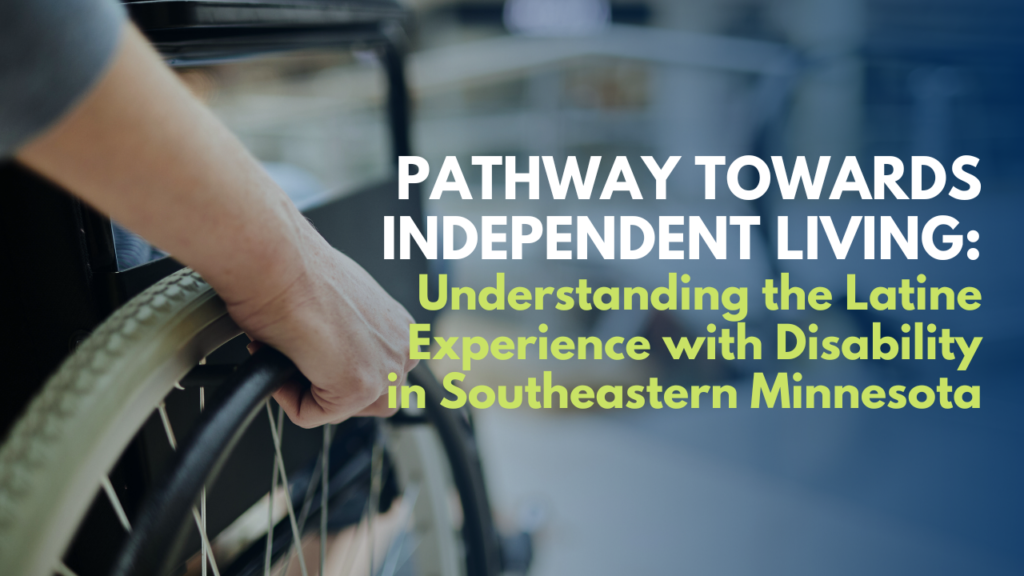
Executive Summary
The Latine community with a disability makes up an average of 9.1% of the Southeastern Minnesota population. This number has increased in the last decade. Although literature is limited, studies show that disability disproportionately affects communities that have been historically marginalized – including the Hispanic community (Balcazar, Magaña, & Suarez-Balcazar, 2019). This population has unique needs as well as particular barriers that preclude them from attaining a more independent life. This study underscores the importance of taking these factors into consideration when allocating resources to support Latines with disabilities in Southern Minnesota.
Southeastern Minnesota Center for Independent Living, Inc. (SEMCIL), partnered with HACER in this qualitative research project to collaboratively engage and support the Latine community with disabilities in this area. The aim was to identify and learn about the challenges and barriers to achieve more independent living.
Methods
HACER conducted one focus group and 10 individual in-depth interviews with people living in Southeastern Minnesota that either self-identified as having a disability or knew someone who has a disability. Both the focus group and the individual interviews were conducted in Spanish with participants that self-identified as Hispanic and/or Latine. In collaboration with SEMCIL, HACER developed a series of questions to understand the Latine community’s definitions and perspective on disability, experiences and barriers, support and needs, and strategies to engage the community and enhance service promotion. In addition to the qualitative study, a descriptive analysis was carried out to better understand the demographic composition of the Latine population with a disability in Southeastern Minnesota.
Findings
The study found that participants defined disabilities as impediments limiting various aspects of life, often making individuals feel incomplete. Hurtful comments and discrimination from others were reported, contributing to feelings of isolation for the participants. However, participants suggested there was some improvement in the Latine community’s acceptance of disabilities. Disabilities were seen as impactful, affecting mental health, and creating emotional and financial challenges. Immigration status and language barriers also complicated access to resources and services. Family and community support were crucial, with trusted individuals playing key roles in connecting participants to resources. The study highlighted the need for culturally relevant and accessible services, focusing greatly on trust and understanding of language and culture.
Conclusion
Latines living with disabilities, along with caregivers and family members, encounter distinct challenges that often exceed those faced by their white counterparts. These challenges stem from language barriers, cultural norms, and prevailing stigmas. To enhance accessibility to disability services within these communities, it is important to adopt comprehensive strategies such as producing translated materials, offering culturally relevant programs, organizing community outreach events, and collaborating with local leaders and organizations. By implementing these recommendations, we aim to support SEMCIL’s mission of expanding service accessibility to the Latine community. It is our hope that this study will support SEMCIL’s efforts in creating a more inclusive and supportive environment for individuals with disabilities and their families.
